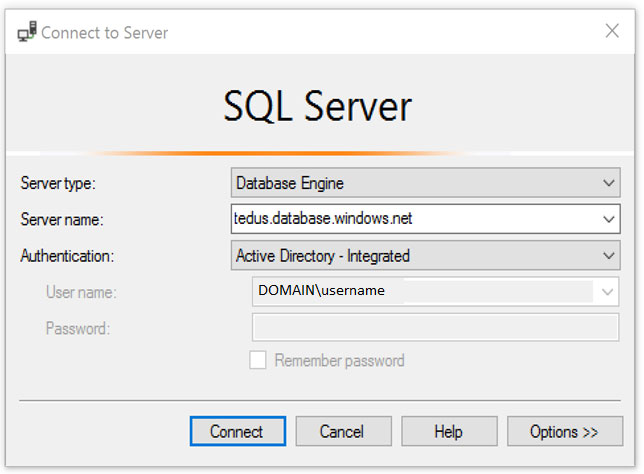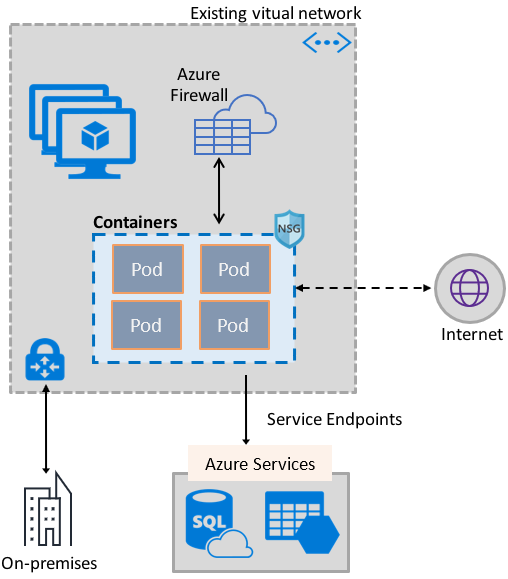Azure AD can be the initial Azure AD managed domain. Azure AD can also be an on-premises Active Directory Domain Services that is federated with the Azure
AD.
Using an Azure AD identity to connect using SSMS or SSDT
The following procedures show you how to connect to a SQL database with an Azure AD identity using SQL Server Management Studio or SQL Server Database
Tools.
Active Directory integrated authentication
Use this method if you are logged in to Windows using your Azure Active Directory credentials from a federated domain.
1. Start Management Studio or Data Tools and in the Connect to Server (or Connect to Database Engine) dialog box, in the Authentication box, select Active
Directory - Integrated. No password is needed or can be entered because your existing credentials will be presented for the connection.

2. Select the Options button, and on the Connection Properties page, in the Connect to database box, type the name of the user database you want to connect to.
(The AD domain name or tenant ID" option is only supported for Universal with MFA connection options, otherwise it is greyed out.)

